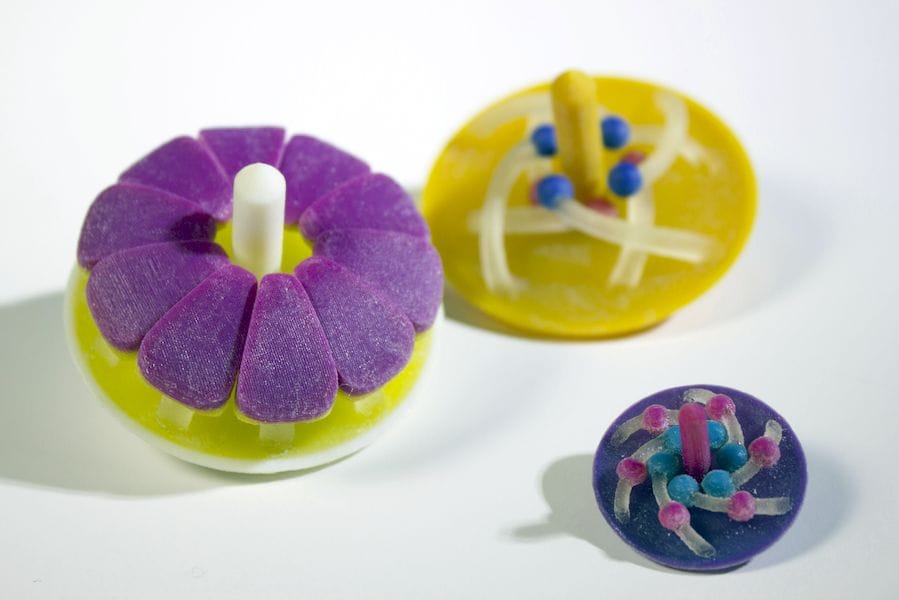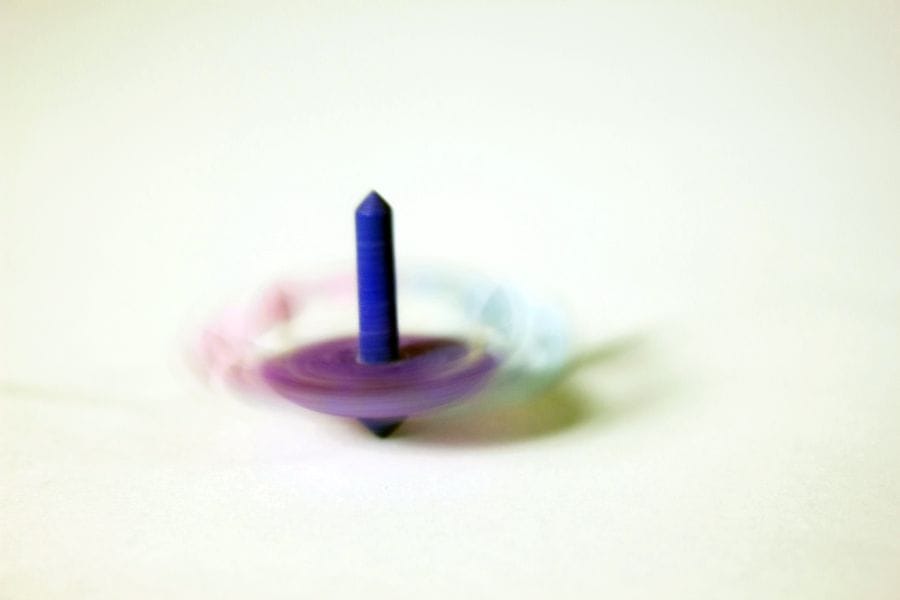
This week’s selection is “Orbit”, the amazing set of animated spinning tops by designer Tor Robinson.
New Zealand-based Robinson is a young designer specializing in use of multimaterials in 3D printed concepts, of which Orbit is certainly one.
Robinson has produced several unusual designs, including a very unusual system for 3D printing tactile taste shapes, and if that doesn’t make any sense to you, you’d best read her explanation on her site.
But today we’re looking at her Orbit design, which is a simple spinning top, an item for which there are countless designs in public 3D model repositories. But Orbit is quite different.

Orbit leverages the multimaterial capabilities of Stratasys’ J750 3D printer, which can produce objects in any color texture and also using flexible material. Tops in the Orbit collection are no doubt colorful, but they are also animated.

Each Orbit top includes some structural features on the top surface made from flexible material. When the top spins, the centrifugal force is sufficient to bend these flexible elements outwards, making the overall diameter of the top much larger.
When the top eventually spins down, the centrifugal force is diminished, and as it does, the flexible elements slowly bend back to their original positions.
It’s a bit hard to describe, but I feel that it’s somewhat similar to watching a flower fold up overnight, except more rapidly. You can see this effect in Robinson’s video:
Robinson explains the theory behind the design:
“Orbit” shows how children and adults alike can explore and investigate the forces of the world around them through play. The project celebrates the unique properties of the J750, an advanced 3D printer which is able to print coloured flexible and rigid materials in the same print. The flexible connections cause coloured components to unfold when affected by centrifugal force, creating the illusion that these tops are transforming, moving like planets and flowers.
This set of relatively simple designs exhibits one quality we particular love: when the functional and aesthetic result of a design far exceeds its geometric complexity.
Via Tor Robinson

